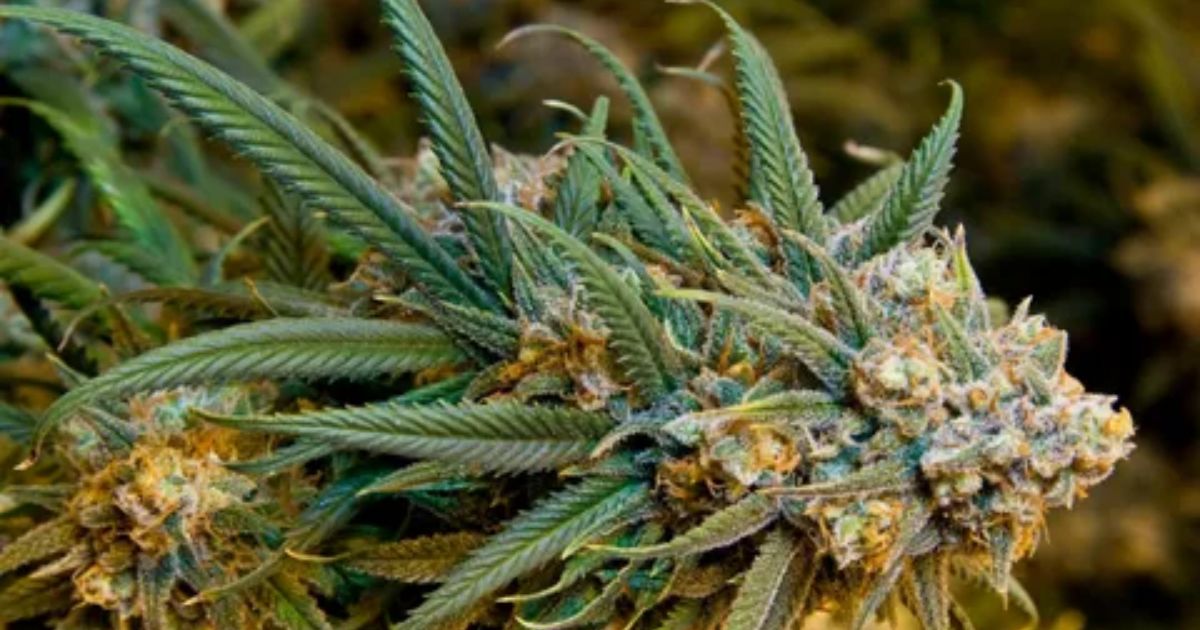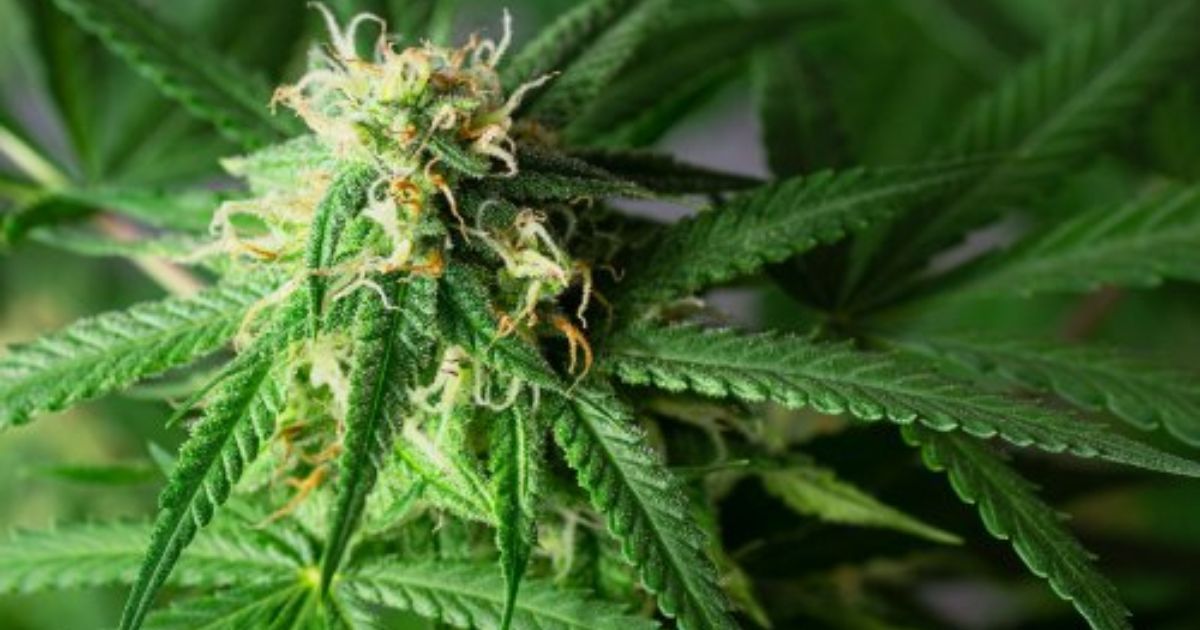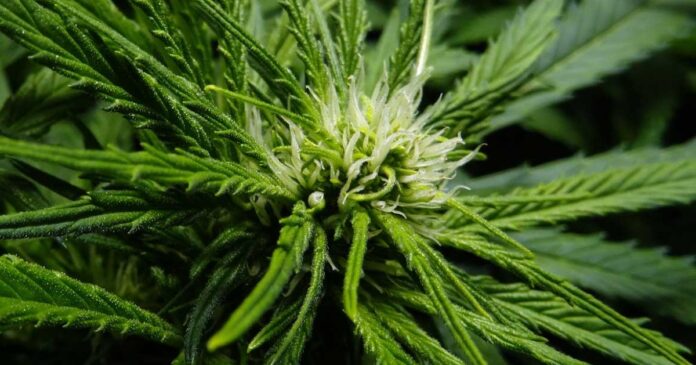You’ve nurtured your cannabis plants for weeks watched them stretch, leaf out, and grow strong. But when it’s time to bloom, they stall. No pistils, no bud sites, no sign of buds flowering. It’s one of the most frustrating moments a grower can face.Whether you’re a first-time cultivator or an experienced green thumb, flowering issues can sneak up unexpectedly. Sometimes it’s the lighting. At other times, it’s due to factors such as nutrients, stress, or even genetics. The slightest misstep during this critical phase can delay flowering or stop it completely.
The good news? In most cases, flowering problems are fixable and are often caused by common, avoidable mistakes. By understanding what’s going wrong, you can take action quickly and get your growth back on track.In this guide, we’ll explore the most common reasons why your cannabis plants might refuse to flower. From incorrect light cycles and nutrient overloads to environmental stress and poor genetics, we’ll break it all down in a clear, grower-friendly way.Because when you know what to look for, you can stop guessing and start growing buds flowering that are dense, fragrant, and full of potential.
Inadequate Light Exposure
Light is the engine of photosynthesis and a critical trigger for weed flowering. Many plants, such as roses, hibiscus, or petunias, need six to eight hours of sunlight each day. Insufficient light is one of the most common reasons buds fail to open.
Why It Happens
Plants placed in shaded areas, under dense tree canopies, or indoors with inadequate light often prioritise vegetative growth over flowering. Even partial shade can reduce bloom production in sun-loving species. Additionally, artificial lighting, like indoor grow lights with incorrect spectrums or durations, Cannabis Flowering Stages can disrupt the plant’s photoperiod, confusing its blooming cycle.
Signs of Light Issues
- budded weed plant form but drop prematurely.
- Plants grow leggy with sparse foliage.
- Leaves turn pale or yellowish.
Solutions
- Relocate Plants: Move potted plants to sunnier spots or prune overhanging branches to reduce shade.
- Supplement Light: For indoor plants, flowering weed plant use full-spectrum grow lights with 12–16 hours of exposure, cannabis blooming mimicking natural daylight.flowering cannabis
- Know Your Plant: Research whether your plant is a short-day (e.g., chrysanthemums) or long-day (e.g., spinach) species to adjust light exposure accordingly.
By ensuring proper light, hemp plants flowering you’ll set the stage for successful flowering.
Improper Watering Practices

Water is essential for plant health, but both overwatering and underwatering can prevent buds from opening. weed plant buds budding pot plants Striking a balance is key to supporting flower development.
Why It Happens
Overwatering suffocates roots by filling the air spaces in the ground, which causes root rot and reduced nutrient uptake. Underwatering, conversely, causes drought stress, forcing plants to conserve energy and abort buds. The Guideline Of Organic Nutrients Inconsistent watering—alternating between soggy and dry soil—further stresses plants,budding weed plant disrupting their blooming process.
Signs of Watering Issues
- Overwatering: Yellowing leaves, wilting despite wet soil, or mouldy soil surfaces.
- Underwatering: Drooping leaves, dry or crispy buds, and stunted growth.
- Bud drop in both cases, cannabis budding as plants prioritise survival over reproduction.
Solutions
- Before watering, stick a finger 1-2 inches into the soil to check its moisture content. The soil. Water only if it feels dry.
- Improve Drainage: Use well-draining soil mixes and pots with drainage holes to prevent waterlogging.
- Water Consistently: Establish a watering schedule based on your plant’s needs—daily for thirsty plantspot plants budding like impatiens, Biggest Joint Ever weekly for drought-tolerant ones like lavender.
- Mulch: Use natural mulch to retain moisture and reduce evaporation in outdoor gardens.
Proper hydration supports bud development and prevents premature drop.
Nutrient Imbalances
Nutrients fuel plant growth, but imbalances can derail flowering. Excess nitrogen, for instance, cannabis flowering promotes lush foliage at the expense of blooms, while deficiencies in phosphorus or potassium hinder bud formation.
Why It Happens
Gardeners often apply high-nitrogen fertilizers, commonly found in lawn products, which stimulate leaf and stem growth but suppress flowering. Phosphorus deficiency limits the energy transfer needed for blooms, while a potassium shortage weakens overall plant vigor. Micronutrient deficiencies,flowering stage weed such as those of magnesium or iron, can also disrupt flowering.
Signs of Nutrient Issues
- Excess nitrogen: Vigorous green growth with few or no flowers.
- Phosphorus deficiency: Small, weak buds or no bud formation.
- Potassium deficiency: Weak stems,budding pot poor bud quality, or leaf scorching.
- Micronutrient issues: Yellowing leaves or stunted growth.
Solutions
- Choose the Right Fertiliser: Use a balanced fertiliser (e.g., 10-10-10) or one higher in phosphorus (e.g., 5-10-5) to promote flowering.
- Soil Testing: Test the soil’s pH and nutrient levels to identify any deficiencies. The majority of flowering plants do best on having a pH between 6.0 and 7.0, which is neutral to slightly acidic.
- Apply Sparingly: Follow fertiliser instructions to avoid overfeeding, flowering marijuanas which can burn roots or cause salt buildup.
- Foliar Sprays: For quick fixes, Tips for Growing the Popular use foliar sprays containing micronutrients such as magnesium or iron.
Balanced nutrition ensures plants have the resources to produce and sustain flowers.
Incorrect Pruning Practices
Pruning shapes plants and encourages growth, but improper timing or technique can remove flower buds, preventing blooms.
Why It Happens
Some plants, like hydrangeas or lilacs, form buds on old wood (last season’s growth), while others, like butterfly bush, pot budding bloom on new wood. Pruning at the wrong time—cutting old wood before flowering or new wood too late—removes potential blooms. Over-pruning can also stress plants, diverting energy from flowering to recovery.
Signs of Pruning Issues
- No buds form after pruning.
- Plants produce fewer flowers than expected.
- Vigorous new growth with no blooms.
Solutions
- Know Your Plant’s Cycle: Research whether your plant blooms on old or new wood. For example, prune spring-flowering shrubs like azaleas after blooming, and summer bloomers like crape myrtle in late winter.
- Use Proper Tools: Use sharp,bloom for cannabis clean shears to make precise cuts and prevent the transmission of disease.
- Prune Lightly: Remove only dead, damaged, or crossing branches to maintain plant health without sacrificing buds.
- Deadhead Spent Blooms: For repeat bloomers like roses,weed plant stages to promote the formation of new buds, remove faded flowers.
Correct pruning enhances flowering and maintains plant structure.
Environmental Stress
Extreme temperatures, humidity, or sudden weather changes can shock plants, causing buds to drop or fail to open.
Why It Happens
Frost can damage tender buds, while excessive heat or low humidity stresses plants, reducing their ability to flower. Sudden shifts, such as moving indoor plants outside without proper acclimation, can disrupt growth cycles. Poor air circulation, common in crowded gardens, also increases the risk of disease, blooming weed plants which can impact buds.
Signs of Environmental Stress
- Buds turn brown or black and drop.
- Leaves curl, wilt, or develop spots.
- Stunted or distorted bud growth.
Solutions
- Protect from Extremes: Use frost cloths or move potted plants indoors during cold snaps to protect them from the elements. backpackboyz white creme dulce Provide shade cloth or extra watering during heat waves.
- Acclimate Plants: Gradually introduce indoor plants to outdoor conditions over 7–10 days.
- Improve Airflow: Space plants adequately cannabis plant and prune dense foliage to reduce humidity and disease risk.
- Monitor Weather: Check forecasts and act preemptively to shield plants from sudden changes.
Stable conditions help buds develop into full blooms.
Pests and Diseases

Insects and pathogens can weaken plants, diverting energy from flowering to survival and defence. Common culprits include aphids, spider mites, powdery mildew, and botrytis.
Why It Happens
Pests like aphids suck sap from buds, weakening them, while spider mites cause stippling and bud drop. Fungal diseases, such as powdery mildew, coat buds in white powder, inhibiting development. Bacterial or viral infections can also cause buds to distort or die. Overcrowding, poor sanitation, or high humidity exacerbate these issues.
Signs of Pests or Diseases
- Aphids: Sticky residue or curled buds.
- Spider mites: Fine webbing and speckled leaves.
- Powdery mildew: White coating on buds or leaves.
- Botrytis: Grey, fuzzy mould on buds.
Solutions
- Examine Frequently: Check plants every week for pest activity or disease, especially under leaves and at bud bases.
- Organic Controls: Use neem oil or insecticidal soap for pest control, apple rose and sulfur-based fungicides for mildew prevention.
- Improve Sanitation: Remove dead leaves and debris to reduce the spread of disease.
- Isolate Affected Plants: Prevent pests or pathogens from spreading to healthy plants.
Vigilance and early intervention keep buds healthy and blooming.
Plant Maturity and Lifecycle Issues
Some plants take time to reach flowering maturity, and others have specific lifecycle requirements that, if unmet, prevent blooming.
Why It Happens
Young plants, such as newly planted perennials or fruit trees, may require 1 to 3 years to establish before they begin to flower. Biennials, like foxgloves, only bloom in their second year. Some plants also require specific conditions, like vernalization (cold periods) for tulips, to trigger flowering. Misunderstanding these needs leads to disappointment.
Signs of Lifecycle Issues
- Healthy plants with no buds.
- Inconsistent flowering in biennials or perennials.
- Delayed blooming in new plants.
Solutions
- Research Plant Needs: Confirm whether your plant is annual, biennial, or perennial, and understand its maturity timeline.
- Provide Vernalization: For plants like bulbs, ensure they experience required cold periods (e.g., refrigerate tulip bulbs for 10–12 weeks if winters are mild).
- Be Patient: Allow young plants time to establish strong roots before expecting blooms.
- Replace Old Plants: Some perennials, such as peonies, may cease flowering after decades. Divide or replant to rejuvenate.
Understanding your plant’s lifecycle ensures you meet its flowering requirements.
Soil and Root Health

Poor soil conditions or root issues can limit nutrient and water uptake, resulting in stunted bud development.
Why It Happens
Compacted soil restricts root growth, while poor soil fertility lacks essential nutrients. Root-bound plants in small pots struggle to support flowering. Overly alkaline or acidic soil also locks up nutrients, making them unavailable to plants.
Signs of Soil/Root Issues
- Stunted growth or small buds.
- Yellowing leaves despite proper care.
- Roots circling pot edges or emerging from drainage holes.
Solutions
- Enhance Soil: Incorporate organic materials, such as compost, to improve soil fertility and structure.
- Test pH: Adjust soil pH to the ideal range for your plant (usually 6.0–7.0) using lime (to raise) or sulfur (to lower).
- Repot Root-Bound Plants: Move plants to larger pots with fresh, well-draining soil.
- Aerate Soil: Loosen compacted garden soil with a fork to improve root access to air and water.
Conclusion
When your cannabis plants stop flowering—or never start—it can be incredibly discouraging. However, remember that even experienced growers encounter these hurdles. The key is not to panic, but to observe, diagnose, and adjust. Most flowering issues are caused by common, correctable mistakes, and once you identify the root cause, recovery is often within reach.Whether it’s something as simple as adjusting your light cycle, correcting pH levels, or switching to bloom nutrients, small changes can make a massive difference in helping your plants transition into healthy, bud-producing machines. Also, don’t underestimate the impact of environmental stress, pests, or poor genetics—these factors can silently sabotage your flowering phase if not addressed.
Growing cannabis is part science, part patience, and a whole lot of learning. Every mistake you make today becomes a lesson that improves your growth tomorrow. So take a deep breath, trust the process, flowering buds and continue to grow.With the proper knowledge and a little persistence, your plants will reward you with dense, resin-rich buds and a grow experience you’ll be proud of. Stay curious, stay consistent, and soon, you’ll see your garden in full bloom.
FAQ
How long does it take for buds to appear after switching to 12/12 light?
Usually, cannabis plants start showing signs of flowering within 7 to 14 days after switching to a 12/12 light cycle. Some strains may take slightly longer depending on genetics.
Can too much nitrogen prevent flowering?
Yes. High nitrogen levels during the flowering phase can delay or stunt bud formation. It’s essential to transition to bloom-specific nutrients, which include greater quantities of potassium and phosphate, and less nitrogen.
Will autoflowering strains flower without changing the light cycle?
Yes. Autoflower strains begin flowering automatically, regardless of the light schedule, typically between 3 and 5 weeks after sprouting. However, they still require good lighting, nutrition, and an optimal environment to produce high-quality buds.
Can stress completely stop flowering?
Severe stress—such as light leaks, extreme pruning, or root damage—can delay or prevent flowering. Always minimise significant changes during pre-flower and early bloom to avoid shocking your plants.
What are the early signs that flowering has started?
Look for white pistils (hairs) forming at the nodes (where branches meet the main stem). This indicates the beginning of bud development, usually around week 2 of the flowering phase.




